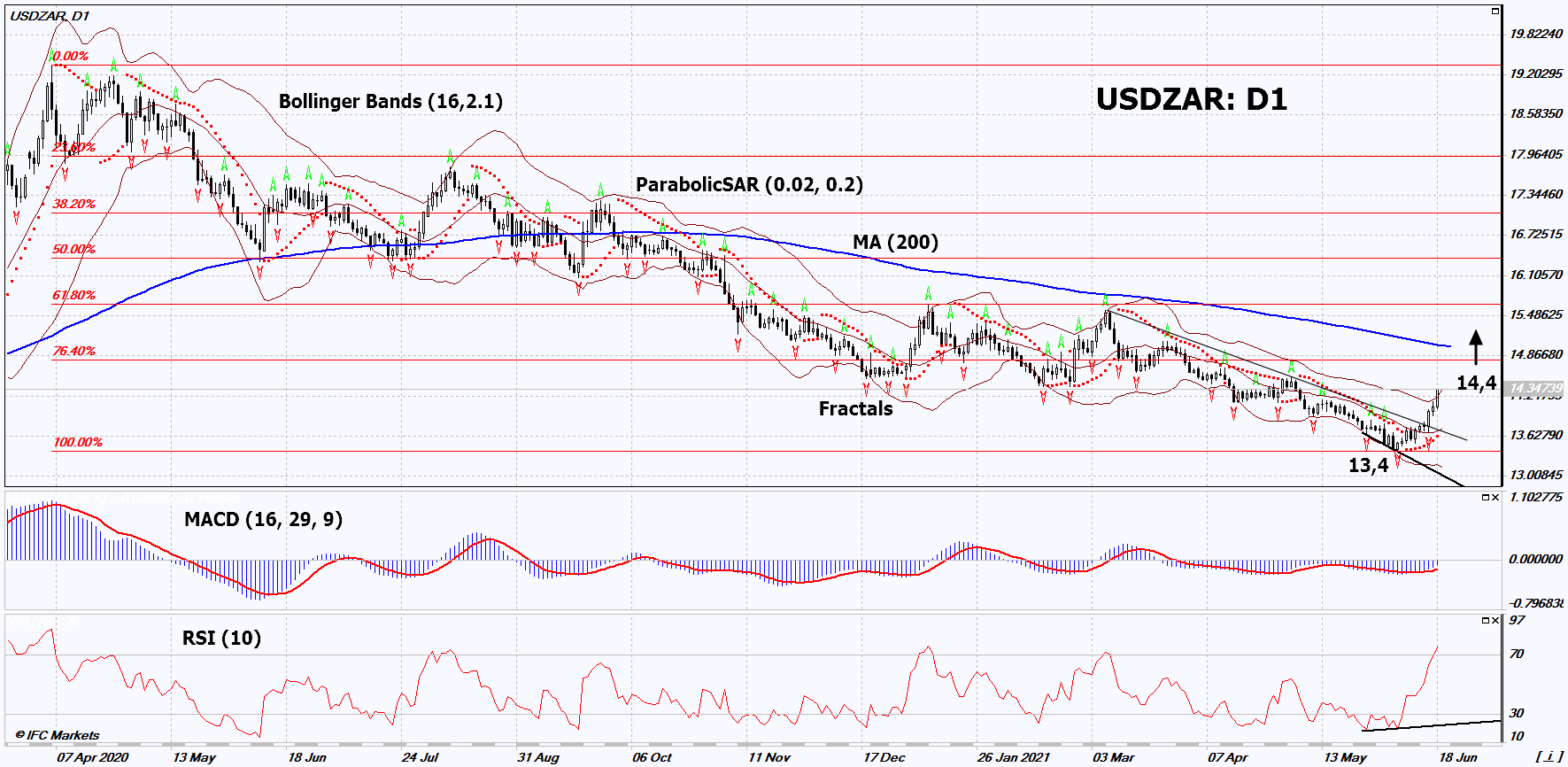Recommendation for USD/ZAR:Buy
Buy Stop : Above 14.4
Stop Loss : Below 13.4
RSI : Neutral
MACD : Buy
MA(200) : Neutral
Fractals : Neutral
Parabolic SAR : Buy
Bollinger Bands : Buy
Chart Analysis
On the daily timeframe, USDZAR: D1 has exceeded the resistance line of the long-term downtrend. A number of technical analysis indicators have formed signals for further growth. We do not rule out a bullish movement if USDZAR: D1 rises above the upper Bollinger band and the last high: 14.4. This level can be used as an entry point. The initial risk limitation is possible below the Parabolic signal, the last two lower fractals and the low since February 2019: 13.4. After opening a pending order, move the stop to the next fractal low following the Bollinger and Parabolic signals. Thus, we change the potential profit / loss ratio in our favor. The most cautious traders, after making a deal, can go to the four-hour chart and set a stop-loss, moving it in the direction of movement. If the price overcomes the stop level (13.4) without activating the order (14.4), it is recommended to delete the order: there are internal changes in the market that were not taken into account.
Fundamental Analysis
The Fed’s statement about a possible tightening of monetary policy contributed to the strengthening of the US dollar. Will USDZAR quotes continue to rise? As a result of the next meeting, the Fed announced that it does not exclude a 2-fold increase in the rate by 0.25% in 2023. This is a year earlier than investors expected. Fed head Jerome Powell did not rule out the reduction of the bond repurchase program. Now it is $ 120 billion a month (US Treasuries $ 80 billion and mortgage bonds $ 40 billion). Director of St. Louis Federal Reserve - James Bullard said that it makes sense to raise the current rate (+ 0.25%) by the Fed early next year, if inflation continues to rise. Let’s remind that in May it was 5% in annual terms. Now inflation in the US is expected to fall to 4.5% in June. In turn, the weakening of the South African rand may occur against the background of a decrease in world prices for non-ferrous metals. The Chinese authorities are going to sell part of the state reserves of copper, aluminum and zinc to reduce their imports. On June 23 in South Africa will be published data on inflation for May. A noticeable increase is expected, which may weaken the rand exchange rate. In April, consumer prices in South Africa rose 4.4% on an annualized basis. This is higher than the South African Reserve Bank rate, which is currently 3.5%.
